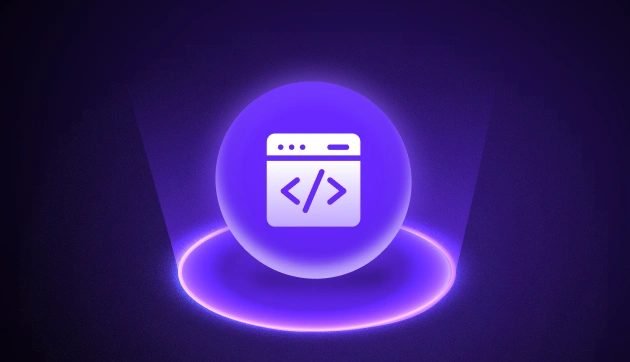Top 6 Reasons Why AngularJS is Better than ReactJS
Feb 18, 2025 3 Min Read 2116 Views
(Last Updated)
Numerous articles are discussing whether React or Angular is the better web development framework. We will look at some of the main reasons why Angular is a better choice than React in this article.
Angular is a complete toolkit that includes all a developer needs to create large-scale applications. It is a free and open-source platform for building mobile apps, single-page web apps, and hybrid apps. TypeScript, which is developed and maintained by Google is used to construct Angular.
It is no surprise that leading companies like Xbox, Forbes, BMW, and others prefer Angular to React for front-end development. Samsung Forward, Microsoft Office Home, Forbes, and the BMW Driveaway Price Calculator are just a few of the projects developed with Angular.
Table of contents
- Why Angular?
- Top 6 Reasons AngularJS is Better than ReactJS
- #1 Full-fledged toolkit
- #2 More Consistency for Standard Components
- #3 Separate HTML and JS
- #4 Backward Compatibility
- #5 React requires more coding
- #6 Bundle size
- Conclusion
Why Angular?
Angular is a full-fledged framework with a lot of features, while React is just a UI component library.
It has several fascinating features, ranging from simple abstractions like components, utilities, and modules to TypeScript, RxJS, Angular Elements, and its state management approach.
It also has a higher abstraction level than React, and it introduces more fundamental concepts to learn.
Now, let us look at some of the best features of Angular that make it so unique and explain why is Angular better than React.
Before diving into the next section, ensure you’re solid on full-stack development essentials like front-end frameworks, back-end technologies, and database management. If you are looking for a detailed Full Stack Development career program, you can join GUVI’s Full Stack Development Course with placement assistance. You will be able to master the MERN stack (MongoDB, Express.js, React, Node.js) and build real-life projects.
Additionally, if you would like to explore JavaScript through a self-paced course, try GUVI’s JavaScript certification course.
Top 6 Reasons AngularJS is Better than ReactJS
Let’s take a look at the 6 best features of AngularJS that make it so great!
#1 Full-fledged toolkit
Angular is a fully-fledged framework that includes several out-of-the-box features, such as RxJS, Angular CLI, and Angular Universal.
RxJS is a JS library that introduces the idea of reactive programming.
Angular CLI is a command-line interface for AngularJS. It is simple to install and use, newcomer-friendly, provides creative testing tools and more straightforward commands, and is supported by various platforms, allowing even third-party components to be updated.
Server-side rendering is done using Angular Universal.
Angular Universal generates static application pages on the server that are later bootstrapped on the client. This means that the app renders faster in general, allowing users a chance to see the app’s interface before it becomes completely interactive.
#2 More Consistency for Standard Components
Angular makes use of concepts like Components, Services, and Modules.
Components are ES classes that have been specially decorated and are responsible for executing application logic and rendering the prototype.
Services are classes that incorporate business and device logic and are used by components. Modules are DI containers that are used to link related components, utilities, pipes, and other entities.
Most of the elements, such as view routing, HTTP queries, and checking, are built-in in Angular, contrasting with React. This means that as long as Angular is alive, these components will be updated and funded.
#3 Separate HTML and JS
Angular keeps HTML and JavaScript separate, which improves clarity.
In React, your logic and rendering code are mixed in directly with HTML. As a result, inline styling is often used to ensure that visual styling is visible with component HTML. Since HTML and JS are separated, these complexities are missing in Angular.
The code hence becomes reusable since the HTML files are separated.
The ng-include directive in Angular offers the ability to embed files. This directive can be used to insert code directly into the main HTML file from external files.
#4 Backward Compatibility
Every developer needs the ability to upgrade architecture to add new modules and libraries.
Backward compatibility is ensured in the latest version of Angular.
This means that the most recent Angular version will continue to work with older versions of the code, making migration and change to the most recent Angular version easier.
It simplifies the update and transition of large projects by enabling lazy loading on sections of AngularJS apps using $route APIs
#5 React requires more coding
React necessitates the writing of more code. Since it does not allow double binding, you will have to change the state manually in different user interface sections.
React needs extra code, which is required to improve efficiency. Since we only use libraries for high-performance programming, the other performance is of little use to us and needs us to write more code.
When combined with Redux, it becomes more challenging to learn and code in React. Since React is a UI system, apps written with it require the use of additional libraries. Redux, React Router, and Helmet, for example, improvethe state management, routing, and API interaction processes. This necessitates further coding in React.
#6 Bundle size
Bundle size determines how fast the
initial loading of the page takes place in an application. The smaller size of the file implies that the file loads quickly. Faster loading time leads to a higher conversion rate and margin.
Angular accomplishes this by not having the whole Angular application framework in the user’s app. It removes Development utilities and Unused modules as part of the build process.
The framework then performs additional optimizations by minifying and compressing the data. This reduces the size of the bundle.
These optimizations are done using the Ivy compiler, which is part of its most recent iterations. The Ivy compiler performs a variety of optimizations during the rendering and compilation phases of your app’s development. These improvements could lead to a faster app and a smaller production bundle size.
Kickstart your Full Stack Development journey by enrolling in GUVI’s Full Stack Development Course with placement assistance where you will master the MERN stack (MongoDB, Express.js, React, Node.js) and build interesting real-life projects. This program is crafted by our team of experts to help you upskill and assist you in placements. Alternatively, if you want to explore JavaScript through a self-paced course, try GUVI’s JavaScript certification course.
Conclusion
Web development would be a lot simpler if we had champions, but we don’t. Both React and Angular are two titans in a cutthroat industry where only the strongest survive. If you don’t care about the learning curve and want to go for the most scalable option with the most functionality, Angular is the way to go.
Angular includes all of the essential features that developers would need to scale an existing application. This is why Angular is better than React. It comes with many features you’ll need to build a modern web application like dependency injection models, class-based modules, and routing, to name a few of the standard features.
We have put forth a list of compelling reasons why angular is better than React in this article. We hope this will provide you with enough information to determine which technology is best for you and your project!































Did you enjoy this article?